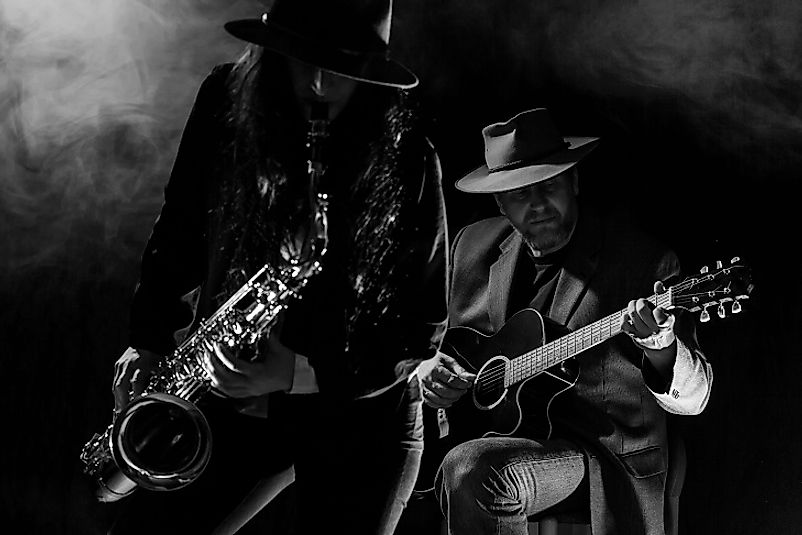Where Did Blues Originate?

5. Overview and Characteristics
The common instruments used in the blues musical genre include six-string guitars, pianos, harmonicas, bass guitars, drums, blues harps, and slide guitars. The genre is known for its lyrics, bass lines, and instrumentation. Traditionally, the music consisted of a line repeated four times, but that has since changed, and in the recent past, the line is sung over the first four bars, repeated in the next four bars, and the concluding line is made longer. This form is referred to as the "A-A-B" pattern. In the early stages, the music was used to express personal woes by African-Americans towards the harsh realities of life.
4. Origins
The earliest forms of what we now know as blues music originated from the Southern regions of the United States among communities of African Americans in the second half of the 19th Century. It came about as a result of fusing African musical traditions with Black Americans' work songs and European-American folk music. The origin of the term blues is not clear. However, many have asserted that it may have originated from the term “blue devils” which referred to the “intense visual hallucinations emanating from severe alcohol withdrawal. The phrase was widely used in Britain. In America, the phrase blue devils referred to an extreme state of sadness. In the 1800s, “blue devils” was associated with alcohol in the US. Although it is claimed the phrase could be older among the African-Americans referring to music, the first copyrighted blues track was recorded in 1912. The African-Americans are the pioneers of blues, and this is the main reason for its poor documentation partly because of racism and partly because most of them were illiterate in the early 19th Century.
3. Spread and Development
The first musician known to use the word blues in a song title was Antonio Maggio, who did so in 1908 in his track, “I got the blues.” It was, however, Hart Wand’s “Dallas Blues” that was the first to be copyrighted. The first African American to record and copyright blues track was Mamie Smith in 1920. It is in this year that the music was commercialized. Initially, the music was being listened in juke joints. Juke joints were areas where African American would go to rest after a day of hard work. Activities featured in these places included music, dancing, gambling, and drinking alcohol. There are several sub-genres of blues music which include classic female blues, country blues, electric blues, and the boogie-woogie blues among others. In the 1950s, the electric blues became very famous and dominated the mainstream media waves. In 1970, white Americans became part of the audience of what was previously black man's music. Currently, blues commands a religious following with the internet helping artists to connect with their fans.
2. Notable Blues Artists, Past and Present
One of the greatest personalities in blues music history was Blind Lemon Jefferson, who was born in 1893 and died in 1929. Many have referred to him as the "Father of Texas Blues". He was born blind though some reports have indicated that it was partial blindness. His career peak was between 1926 and 1929 when he met his death. During this short period, he recorded over 100 tracks. He was talented I playing the guitar and most young artists found it difficult to imitate his style. Another big name was Gertrude Malissa, popularly known as Ma Rainey. She was one of the earliest black women to become a professional blues singer and one of the first artists to record. She died of heart attack in 1939, and in 1990, she was inducted into the Blues Foundation Hall of Fame. Other notable artists inducted include Jimmie Rodgers, Bill Monroe, Duke Ellington, and Isaac Watts.
1. Greater Significance and Lasting Legacy
Music experts have argued that blues lies at the foundation of most other popular contemporary music styles. These include jazz, country, soul, R&B, funk, rock, and hip hop. Also, it helped the African-Americans to release their sorrows and grief during the enslavement era. In today’s world, young people use blues to show their deeper emotions. At first, it was seen as an African music genre but has evolved over time and connects different races.











